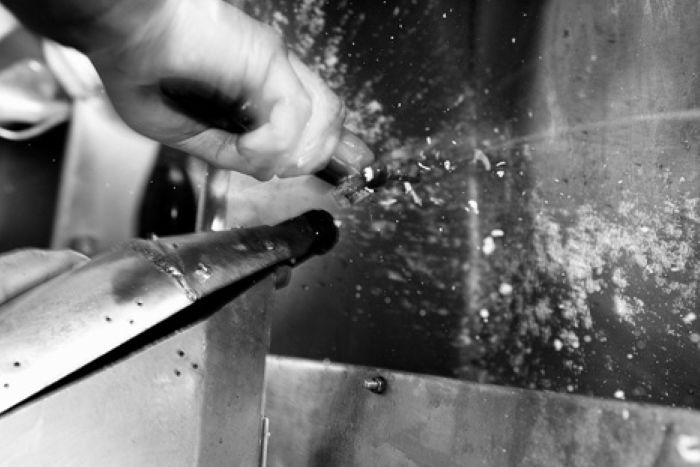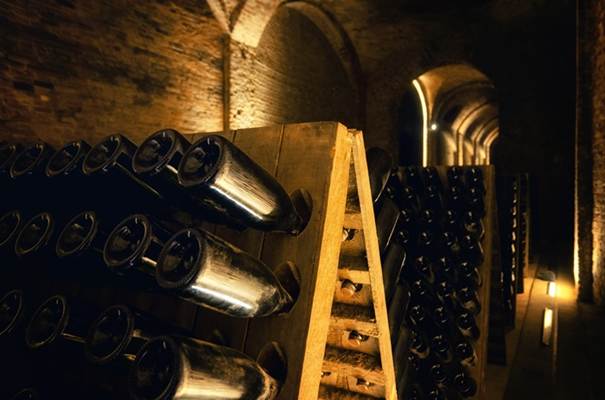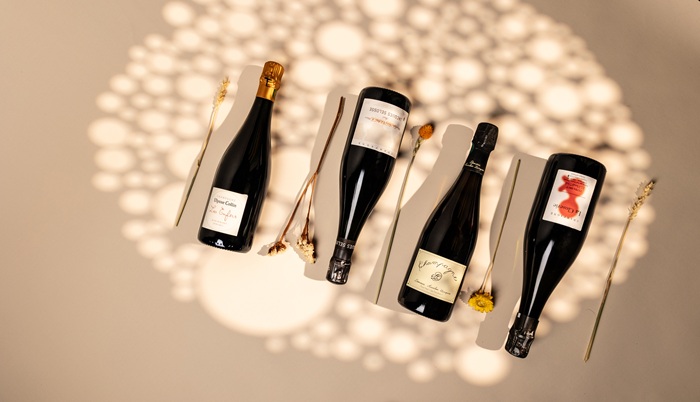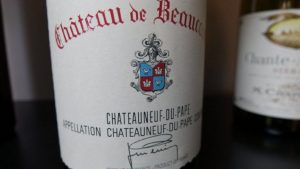
Champagne is unlike any other wine. First of all, it sparkles; secondly, although it’s a white wine, it is sometimes made from black grapes. And last but not least, its production process involves a series of mysterious steps such as dosage and disgorgement. The latter, in particular, has stirred a (minor) debate in the Champagne region…
How Champagne is made
The process that turns a still wine into Champagne begins only after the first alcoholic fermentation is completed. A precise blend of wine, sugar, and yeast – known as liqueur de tirage – is introduced to the still base wine to begin the traditional method of making Champagne, or méthode traditionnelle. This carefully measured solution initiates the secondary fermentation within the bottle, the delicate process responsible for the wine’s fine, dancing bubbles that bring it to life. The wine is then left to rest on its lees for a more or less significant period. Official regulations require non-vintage Champagne to rest on laths for at least one year, while vintage cuvées require a minimum of three. However, many winemakers and cellar masters choose to extend this ageing period even further. No other sparkling wine producing region in the world demands such prolonged ageing.
During this phase, the yeast cells die and gradually break down – a natural process of autolysis that transforms the wine. Then, the deposit from these spent yeasts slowly gathers in the neck of the bottle, which is progressively tilted towards the end of the process. Disgorgement is the step that removes this deposit – usually by briefly freezing the bottleneck so that the small “ice plug” created containing the sediment can be swiftly expelled.

What the disgorgement date reveals
For a vintage Champagne, the date of disgorgement, typically shown on the back label, is essential information for consumers. It indicates how long the wine has aged on laths between the start and the end of the Champagne-making process. For instance, a 2004 vintage disgorged in October 2013 would have spent just over eight years resting on laths (from June 2005 to October 2013). Generally speaking, such extended ageing leads to greater aromatic complexity and depth than a 2004 vintage that was disgorged in 2008.
Non-vintage Champagne, on the other hand, is based on the most recent vintage available – with at least 15 months between the vintage of the base wine and disgorgement. In other words, a bottle disgorged in September 2014 would likely draw on a 2012 vintage. These non-vintage blends also incorporate reserve wines from earlier years, ensuring a balanced style and a consistent house character from one release to the next.
Why the disgorgement date matters
For the larger Champagne houses, the disgorgement date may seem of lesser importance – as noted by Frédéric Panaiotis, the late cellar master of Ruinart, who often emphasised that point. In such cases, consumers primarily seek the name and the distinctive house style they enjoy, rather than focusing on the technical production details behind the bottle they’ve purchased.
Even so, the disgorgement date can be meaningful, even for non-vintage Champagnes, as it gives an indication of the wine’s freshness. The more recent the disgorgement date, the fresher the Champagne will taste, showing youthful, vibrant aromas, regardless of the exact base vintage used.
On a practical level, it’s also a handy way to keep track of bottles in your cellar. For those who purchase the same Champagne year after year, the disgorgement date is often the only way to distinguish one release from another.
And finally, for a slightly more discerning enthusiast, two Champagnes theoretically identical, disgorged six months apart, may actually prove noticeably different. Indeed, the wine may have rested a further six months – a detail far from trivial – or the base vintage could even have changed in the intervening time!

The debate: Should Champagne labels show the disgorgement date?
In 2014, Frédéric Panaiotis, then cellar master at Ruinart, caused a stir when he told the British magazine Decanter that he did not support displaying the disgorgement date on non-vintage Champagne labels. The comment sparked renewed debate in the Champagne region over the importance of indicating the disgorgement date on labels. This debate remains relevant today, reflecting two opposing philosophies within the region.
The major Champagne houses tend to downplay the significance of such details. As one representative from Billecart-Salmon explained: “When we release our cuvées to the market, it means they fully meet our quality standards and are ready to be enjoyed. For that reason, we see little point in indicating the disgorgement date.”
Yet some critics take a very different view. Antonio Galloni, long-time Champagne critic for Robert Parker, even stated that he would no longer review non-vintage Champagnes if their disgorgement dates are not disclosed. His reasoning is straightforward, “When I rate a non-vintage Champagne, I want to be sure that my readers will purchase that exact same wine. Without a vintage date on the bottle, the disgorgement date is the only reliable way for a consumer to know whether the bottle they’re buying matches the one I reviewed.”
This minor controversy, certainly far from settled, only adds another dimension to the perennial debate that divides the region: should Champagne be a branded wine, defined by a consistent style and balance, much like whisky? Or can it, as is the case with all fine wines, be the expression of a terroir and a vintage? Recent developments in Champagne suggest that support for the “terroir and vintage” camp is gaining ground, with the growing success of many independent winemakers determined to craft Champagnes of genuine character.
All Champagnes for sale on iDealwine
Look up the price of a wine
Also on the iDealwine blog:



